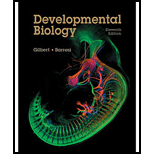
To review:
The fate of blastocyst in the embryos of monotreme mammals (e.g. platypus) and marsupial mammals (e.g. kangaroo) that lay eggs and have extremely short pregnancies respectively.
Introduction:
The blastocyst is defined as a structure which is formed during the early developmental stage of mammals. It is mainly characterized by the presence of an inner cell mass (ICM) which is responsible for the formation of embryo. The outer layer of blastocyst is known as trophoblast. Unlike eutherian mammals, marsupials have short pregnencies, and are born very early in embryonic development. In oviparous monotremes, the offsprings also raised in maternal pouch. Deposition of the egg from the cloaca takes place directly for the incubation.
Explanation of Solution
The blastocyst is responsible to carry the embryo from cleavage to gastrulation. This structure bears a remarkable diversity in its mode of formation, longevity, morphology and association with uterine endometrium in different organisms. In terms of evolution of viviparity, the principal drivers of blastocyst evolution is associated with loss of yolk coupled with evolution of the placenta. In many species the trophoblast segregation is associated with blastocyst formation, but in case of marsupials these processes not coincide. In monotremes and most of the marsupials the zygote undergo polarization. The clevage signal are related to this polarized state. The embryonic-cell lineages are developed at the center of the blastocyst epithelium and extra embryonic lineages are developed at the periphery.
There are a number of similarities and differences are present in eutherians and other mammals like marsupials and monotremes. In marsupials and monotremes, the pluriblast or the inner cell mass is not enveloped by the trophoblast. Here the ICM is part of a continuous epithelium that forms the unilaminar blastocyst, and this pluriblast than segregates into hypoblast and epiblast.
Thus it is concluded that unlike eutherian, marsupials and monotremes bears the inner cell mass, not enveloped by the trophoblast, which later forms the hypoblast and epiblast which give rise to different germ layers.
Want to see more full solutions like this?
Chapter 12 Solutions
Developmental Biology
- Outline the negative feedback loop that allows us to maintain a healthy water concentration in our blood. You may use diagram if you wisharrow_forwardGive examples of fat soluble and non-fat soluble hormonesarrow_forwardJust click view full document and register so you can see the whole document. how do i access this. following from the previous question; https://www.bartleby.com/questions-and-answers/hi-hi-with-this-unit-assessment-psy4406-tp4-report-assessment-material-case-stydu-ms-alecia-moore.-o/5e09906a-5101-4297-a8f7-49449b0bb5a7. on Google this image comes up and i have signed/ payed for the service and unable to access the full document. are you able to copy and past to this response. please see the screenshot from google page. unfortunality its not allowing me attch the image can you please show me the mathmetic calculation/ workout for the reult sectionarrow_forward
- Skryf n kortkuns van die Egyptians pyramids vertel ñ story. Maximum 500 woordearrow_forward1.)What cross will result in half homozygous dominant offspring and half heterozygous offspring? 2.) What cross will result in all heterozygous offspring?arrow_forward1.Steroids like testosterone and estrogen are nonpolar and large (~18 carbons). Steroids diffuse through membranes without transporters. Compare and contrast the remaining substances and circle the three substances that can diffuse through a membrane the fastest, without a transporter. Put a square around the other substance that can also diffuse through a membrane (1000x slower but also without a transporter). Molecule Steroid H+ CO₂ Glucose (C6H12O6) H₂O Na+ N₂ Size (Small/Big) Big Nonpolar/Polar/ Nonpolar lonizedarrow_forward
- what are the answer from the bookarrow_forwardwhat is lung cancer why plants removes liquid water intead water vapoursarrow_forward*Example 2: Tracing the path of an autosomal dominant trait Trait: Neurofibromatosis Forms of the trait: The dominant form is neurofibromatosis, caused by the production of an abnormal form of the protein neurofibromin. Affected individuals show spots of abnormal skin pigmentation and non-cancerous tumors that can interfere with the nervous system and cause blindness. Some tumors can convert to a cancerous form. i The recessive form is a normal protein - in other words, no neurofibromatosis.moovi A typical pedigree for a family that carries neurofibromatosis is shown below. Note that carriers are not indicated with half-colored shapes in this chart. Use the letter "N" to indicate the dominant neurofibromatosis allele, and the letter "n" for the normal allele. Nn nn nn 2 nn Nn A 3 N-arrow_forward
 Understanding Nutrition (MindTap Course List)Health & NutritionISBN:9781337392693Author:Eleanor Noss Whitney, Sharon Rady RolfesPublisher:Cengage Learning
Understanding Nutrition (MindTap Course List)Health & NutritionISBN:9781337392693Author:Eleanor Noss Whitney, Sharon Rady RolfesPublisher:Cengage Learning Anatomy & PhysiologyBiologyISBN:9781938168130Author:Kelly A. Young, James A. Wise, Peter DeSaix, Dean H. Kruse, Brandon Poe, Eddie Johnson, Jody E. Johnson, Oksana Korol, J. Gordon Betts, Mark WomblePublisher:OpenStax College
Anatomy & PhysiologyBiologyISBN:9781938168130Author:Kelly A. Young, James A. Wise, Peter DeSaix, Dean H. Kruse, Brandon Poe, Eddie Johnson, Jody E. Johnson, Oksana Korol, J. Gordon Betts, Mark WomblePublisher:OpenStax College Biology: The Dynamic Science (MindTap Course List)BiologyISBN:9781305389892Author:Peter J. Russell, Paul E. Hertz, Beverly McMillanPublisher:Cengage Learning
Biology: The Dynamic Science (MindTap Course List)BiologyISBN:9781305389892Author:Peter J. Russell, Paul E. Hertz, Beverly McMillanPublisher:Cengage Learning- Case Studies In Health Information ManagementBiologyISBN:9781337676908Author:SCHNERINGPublisher:Cengage





